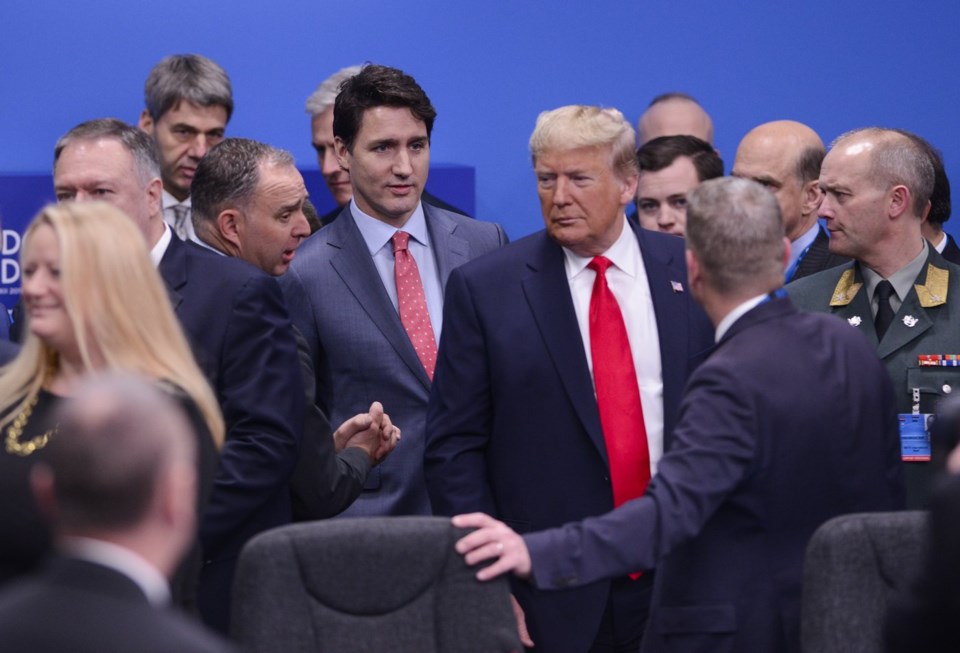Donald Trump posted to Truth Social on Monday that he plans to sign an executive order imposing a 25 per cent tariff on all products coming into the United States from Canada and Mexico.
Here are five things to know about the president-elect's threat and what it means for Canada.
Economic effect would be significant
During the election campaign, Trump had promised to introduce a universal 10 per cent tariff on all American imports. Modelling by the Canadian Chamber of Commerce had suggested that would reduce the size of the Canadian economy by around one per cent, or $30 billion per year.
University of Calgary economist Trevor Tombe said Tuesday that adjusting for a 25 per cent tariff instead would mean an annual real GDP hit to Canada of around 2.6 per cent, or around $2,000 per person.
Retaliation of some kind is likely
Neither Canada nor Mexico are likely to accept punishing tariffs without some form of retaliation.
Mexican president Claudia Sheinbaum suggested Tuesday that Mexico could impose tariffs of its own, while Canada has a history of fighting back against Trump's trade policy.
During the president-elect's first term in office, he imposed a 25 per cent tariff on steel and 10 per cent levy on Canadian aluminum imports.
Canada responded by imposing tariffs of equal value on American steel and aluminum.
Expect some pushback from within the U.S.
Trump will face opposition to his plan within his own country's borders. The U.S.-Canada relationship represents one of the world's most integrated economies, with $3.6 billion in daily cross-border trade, so plenty of U.S. companies stand to be hurt by punitive import tariffs.
Some experts have suggested the U.S. consumer may be most affected. Importers typically pass the cost of tariffs along to their customers in the form of higher prices.
What about CUSMA?
The Canada-United-States-Mexico-Agreement, or CUSMA (known as the USMCA in the U.S.) is a free trade deal between the three countries that came into force in 2020. It replaced the former North American Free Trade Agreement (NAFTA). It allows the vast majority of goods to flow between the two countries tariff-free.
Trump's promise to implement sweeping tariffs would be an apparent violation of the CUSMA deal, meaning there is a possibility Canada and Mexico could seek recourse under the terms of the agreement. But that would take time, and in the meantime, CUSMA itself is due for renegotiation in 2026.
Are tariffs unavoidable at this point?
While Trump is clearly enthusiastic about his proposed tariff policy, it's important to remember that what he says today may not be what is ultimately implemented. Many experts think the president-elect may be using the threat of 25 per cent tariffs as a leverage tactic.
Some have suggested Trump may relent if American companies sound the alarm over potential harms to the U.S. economy.
Other experts have suggested that certain industries, such as energy, could avoid being hit with punitive tariffs simply because the sectors are too integrated on either side of the border and the impact on the U.S. consumer would be severe.
— With files from The Associated Press
This report by The Canadian Press was first published Nov. 26, 2024.
The Canadian Press

